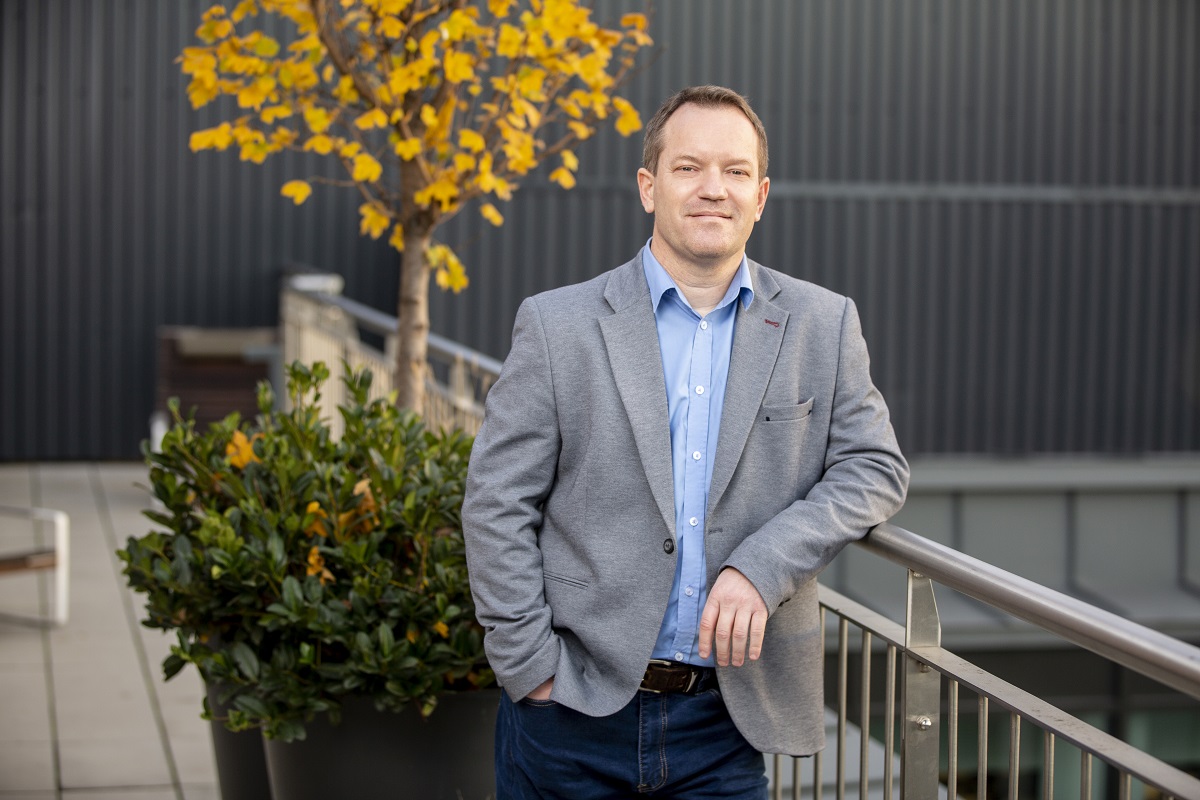PARA helps to map the road infrastructure

Surveying and analysing public roads with the help of a smartphone? Dr. Zoltán Katona’s idea, the PARA (Predictive and Adaptive Road Analyzer) app, will be capable of all this.
Today, virtually every household has at least one car that is used on a daily basis. We use apps to plan the quickest way between two points to achieve fast and efficient travel. But how do we know that the fastest route is at the same time the safest route? Where can we get information on the state of roads? And how can we give feedback to highway authorities about which roads need urgent repair? Dr. Zoltán Katona, who works in the DT-ITS Hungary Growth Portfolio division, has come up with an innovative solution for this problem.
Road survey using tech
The state of roads is of decisive importance in transportation. Potholed roads can seriously damage vehicles and indeed they can cause accidents. Furthermore, in the case of certain service sectors, for example, ambulance service or logistics, it is by no means irrelevant on what standard of roads they deliver patients requiring emergency care or, indeed, fragile goods. Surveying the state of roads is frequently a slow and expensive process. However, PARA is able to do all this cost-efficiently and rapidly relying on data from the smartphones of drivers.
Today, smart devices come equipped with a variety of sensors, accelerometers and cameras capable of taking high-quality pictures. PARA receives these sensor data, which, together with GPS coordinates, are uploaded to the cloud, where – using machine learning – it compares and evaluates the level of vibration induced by the jolts, and from which it is possible to deduce overall road quality. Based on the results, it is possible to draw a heat map of domestic and European road networks and obtain real-time information about those roads it is better to avoid.
A road littered with awards
Deutsche Telekom instantly recognized the value of this innovation. The PARA project started in autumn 2020 and by the following spring it had already won the Deutsche Telekom Lean Innovation Award. A project team tasked with developing the concept and surveying the market was set up. Over nearly four months it conducted negotiations with various state bodies, insurance companies, carriers, police and ambulance services, and carried out research involving 250 people. The results were unambiguous: there is huge demand for just such an app.
The PARA success story didn’t end here: in summer 2021, the project was entered for the mentoring programme of the European Space Agency’s Space App Camp where out of 21 applicants, PARA won the Best Business Foresight category.
The future is a customer-centric model
PARA would serve the needs of both average users and the business/state sector with different variations, thus it consists of two versions:
- The ‘Professional edition’ is targeted at companies and local governments, those bodies who deal with highway maintenance. In this case, smartphones would use a camera feed along with sensor data measuring vibration, thus giving precise feedback on the state of the roads and traffic signage.
- The ‘Community edition’ is for average users, complementing everyday trips. Here, only sensor data would be collected and information would come in the form of pop-up messages if, for example, the driver is approaching a problematic road section or larger pothole. It would also provide the possibility for the police, fire and ambulance services to pass on to drivers information of public interest, while also allowing drivers to report any hazardous traffic-related matters.
PARA is being constantly refined on the basis of market feedback because the development itself is conducted according to the agile methodology. Currently, the project is in the development phase and progress is being assisted by international mentors. The team behind it primarily concentrates on collaboration with local government partners. Furthermore, negotiations are ongoing with the local government of Hamburg in relation to testing, meanwhile members of the development team are experimenting with artificial intelligence, establishing image processing recognizing traffic signage and potholes.
DT-ITS HU colleagues participating in the project: Dr. Zoltán Katona, Zsuzsa Ágnes Orbán, Péter Mezei, Richárd Réfi, Rajmond Tóth, Dávid Juhász, Krisztián Dobos, István Troznai, Krisztián Hefinger.